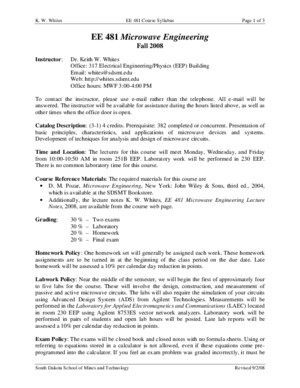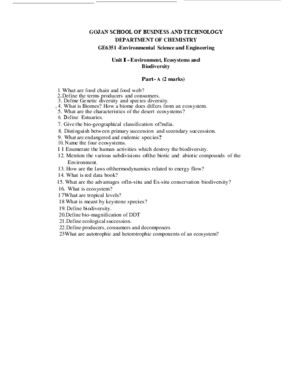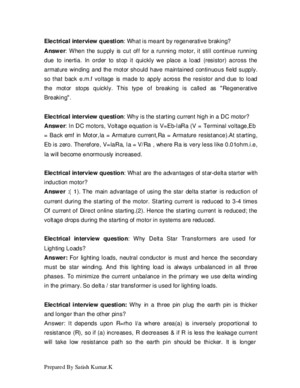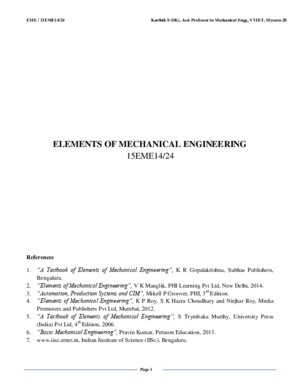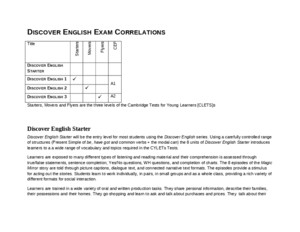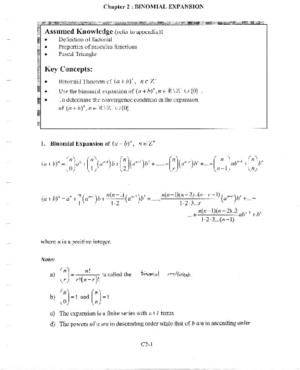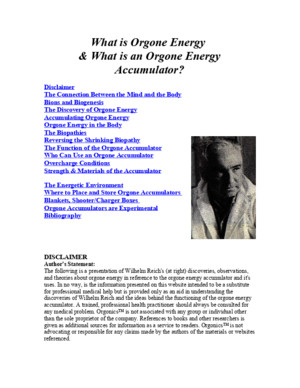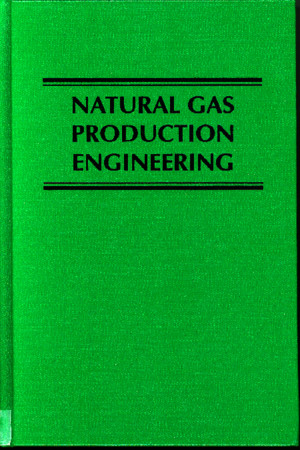ENE 428 Microwave Engineering
There is document - ENE 428 Microwave Engineering available here for reading and downloading. Use the download button below or simple online reader.
The file extension - PDF and ranks to the General category.
Tags
Related
Comments
Log in to leave a message!
Description
ENE 428 Microwave Engineering Lecture 4 Reflection and Transmission at Oblique Incidence, Transmission Lines RS Plane wave propagation in general dielectrics Assume lossless medium The propagation directions are and - PowerPoint PPT Presentation
Transcripts
ENE 428Microwave Engineering Lecture 4 Reflection and Transmission at Oblique Incidence, Transmission Lines RS RS Plane wave propagation in general dielectrics Assume lossless medium The propagation directions are and The plane of incidence is defined as the plane containing both normal to the boundary and the incident wave’s propagation direction The angle of incidenceiis the angle the incident field makes with a normal to the boundary RS Polarizations of UPW obliquely incident on the boundary (1) Perpendicular polarization or transverse electric (TE) polarization is normal to the plane of incidence and tangential to the boundary Only the x component of the magnetic field is tangential RS Polarizations of UPW obliquely incident on the boundary (2) Parallel polarization or transverse magnetic (TM) polarization is normal to the plane of incidence and tangential to the boundary Only the x component of the electric field is tangential RS TE polarization x i z We can write and RS Reflected and transmitted fields for TE polarization Reflected fields Transmitted fields RS Snell’s laws of reflection and refraction (1) Tangential boundary condition for the electric field at z = 0 for this equality to hold, Snell’s law of reflection Snell’s law of refraction or RS Snell’s laws of reflection and refraction (2) the critical angle for total reflection If i cri, then it is total reflection and no power can be transmitted, these fields are referred as evanescent waves RS Reflection and transmission coefficients for TE polarization (1) From the electric field’s BC with phases matched, we have Tangential BC for the magnetic field considering matched phase and equal incident and reflected angles is RS Reflection coefficient for TE polarization Solving Eqs (1) and (2) gets or RS Transmission coefficient for TE polarization Solving Eqs (1) and (2) gets or Notice that RS Ex2 A 2 GHz TE wave is incident at 30 angle of incidence from air on to a thick slab of nonmagnetic, lossless dielectric with r = 16 Find TE and TE RS Fields for TM polarization Incident fields Reflected fields Transmitted fields RS Reflection and transmission coefficients for TM polarization Solving BCs gets and Notice that RS Total transmission for TM polarization Brewster’s angle for total transmission For lossless, non-magnetic media, we have RS Ex3 A uniform plane wave is incident from air onto glass at an angle from the normal of 30 Determine the fraction of the incident power that is reflected and transmitted for a) and b) Glass has refractive index n2 = 145 TM polarization TE polarization RS Transmission lines (1) Transmission lines or T-lines are used to guide propagation of EM waves at high frequencies Examples: Transmitter and antenna Connections between computers in a network Interconnects between components of a stereo system Connection between a cable service provider and aTV set Connection between devices on circuit board Distances between devices are separated by much larger order of wavelength than those in the normal electrical circuits causing time delay RS Transmission lines (2) Properties to address: time delay reflections attenuation distortion RS Distributed-parameter model Types of transmission lines RS Distributed-parameter model The differential segment of the transmission line R’ = resistance per unit length L’= inductance per unit length C’= capacitor per unit length G’= conductance per unit length RS Telegraphist’s equations General transmission lines equations: RS Telegraphist’s time-harmonic wave equations Time-harmonic waves on transmission lines After arranging we have where RS Traveling wave equations for the transmission line Instantaneous form Phasor form RS Lossless transmission line lossless when R’ = 0 and G’ = 0 and RS Low loss transmission line (1) low loss when R’ << L’ and G’ << C’ Expanding in binomial series gives for x << 1 RS Low loss transmission line (2) Therefore, we get RS Characteristic impedance Characteristic impedance Z0is defined as the the ratio of the traveling voltage wave amplitude to the traveling current wave amplitude or For lossless line, RS Power transmission Power transmitted over a specific distance is calculated The instantaneous power in the +z traveling wave at any point along the transmission line can be shown as The time-averaged power can be shown as W RS Power ratios on the decibel scale (1) A convenient way to measure power ratios Power gain (dB) Power loss (dB) 1 Np = 8686 dB dB dB RS Power ratios on the decibel scale (2) Representation of absolute power levels is the dBm scale dBm RS Ex1 A 12-dB amplifier is in series with a 4-dB attenuator What is the overall gain of the circuit?Ex2 If 1 W of power is inserted into a coaxial cable, and 1 W of power is measured 100m down the line, what is the line’s attenuation in dB/m? RS Ex3 A 20 m length of the transmission line is known to produce a 2 dB drop in the power from end to end, what fraction of the input power does it reach the output? What fraction of the input power does it reach the midpoint of the line? What is the attenuation constant? RS
Recommended

